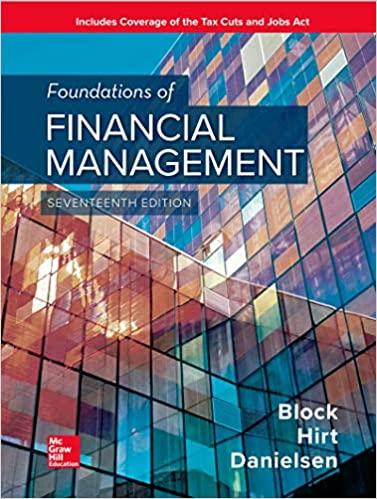Answered step by step
Verified Expert Solution
Question
1 Approved Answer
In late 2 0 1 3 , Wenbo Su , an analyst at WNG Capital LLC ( WNG ) , a U . S .
In late Wenbo Su an analyst at WNG Capital LLC WNG a USbased asset management firm, was reviewing the terms of a proposed transaction for his employer. WNG specialized in aviation leases, and Su was evaluating the terms of a proposed purchaseandleaseback deal with a small private airline based in the United Kingdom. The essence of the transaction would be to transform the airline from being the owner of three aircraft to being the lessee of the aircraft for months. WNG would become the new owner of the equipment aircraft and related parts and would act as the lessor in the deal. The airline would have full use of the aircraft but would not own the aircraft, nor have use of the aircraft after the end of the lease. The cash flows to all parties were complicated, and Su planned to conduct a thorough analysis of the proposed lease terms before making a recommendation to WNGs CEO.
The task for the student is to assume the role of Su who needs to be sure that WNG can meet or exceed its objective of a return to compensate WNG for the credit risk of the airline, plus deliver the objective of an to return on invested capital to its investors. Moreover, Su needs to be cognizant of the fact that a deal that is perceived as too costly for the airline could result in WNG losing business to other airlines in the future.
The primary learning objective of this case is to provide students with a comprehensive exercise in the economics of lease financing. Students are given the primary cash flows to consider in the analysis, plus the discount rate assumed by WNG which allows students to build a straightforward cashflow model and estimate the net present value NPV and IRR for the base case, plus a number of sensitivity scenarios. The discountedcashflow DCF analysis serves to illustrate the importance of the residual value to the lessors evaluation of a lease deal. It also provides the opportunity for students to recognize that cash flows must be valued according to their respective risksthat is the residual value for a lease carries substantially more risk than a monthly lease payment. The case also illustrates how the distribution of value between lessor and lessee is largely determined by the respective bargaining positions of the two parties and the alternatives available to each side.
A secondary objective is to underscore important insights about capital markets, financial innovation, and financial contracting. Financial contracts exist to meet the needs of those providing funds and those using the funds. All contracts provide certain benefits to each party at certain costs, and for particular assets there is always the opportunity to create moreefficient contracts relative to the plainvanilla contracts available in the market. The leasing contract has long been available as an alternative to borrowing and buying an asset. Students can easily see that a lease contract is very similar to debt because of the similarity between a lease payment and an interest payment. The fact that both forms of financing are widely used suggests that leases exploit capitalmarket imperfections and fill special needs for both the user of the asset lessee and the owner of the asset lessorinvestor
The final objective is to provide institutional background on lease financing, which includes the dramatic increase in the volume of leasing, accounting considerations, and a general perspective from the lessors point of view.
QUESTION : Why would an airline want to enter into a saleandleaseback transaction? Why switch from being the owner of the aircraft to just the operator?
QUESTION : What does WNG bring to the deal other than money to buy the aircraft? How does the deal fit into WNGs business model?
QUESTION : In what way is leasing similar to borrowing to buy an asset? How is it different?
QUESTION : What are the cash flows for WNG Using a required rate of return per month what do you get as the NPV of the deal?
Summary of Cash Flow Assumptions
Letter of Intent LOI Terms:
Lease expiry December
Purchase price $
Monthly rent $
Side Letter Adjustments:
Appraisal of unserviceable engine $
Value of items missing trace $
Adjusted purchase price $
Additional rent for missing trace items of trace value $
Analyst Assumptions:
year residual value at time of LOI $
Haircut to residual value for unserviceable engine $
Haircut to residual value for missing trace $
Revised estimate of residual value $
Tax rate
Annual required rate of return
Step by Step Solution
There are 3 Steps involved in it
Step: 1

Get Instant Access to Expert-Tailored Solutions
See step-by-step solutions with expert insights and AI powered tools for academic success
Step: 2

Step: 3

Ace Your Homework with AI
Get the answers you need in no time with our AI-driven, step-by-step assistance
Get Started


